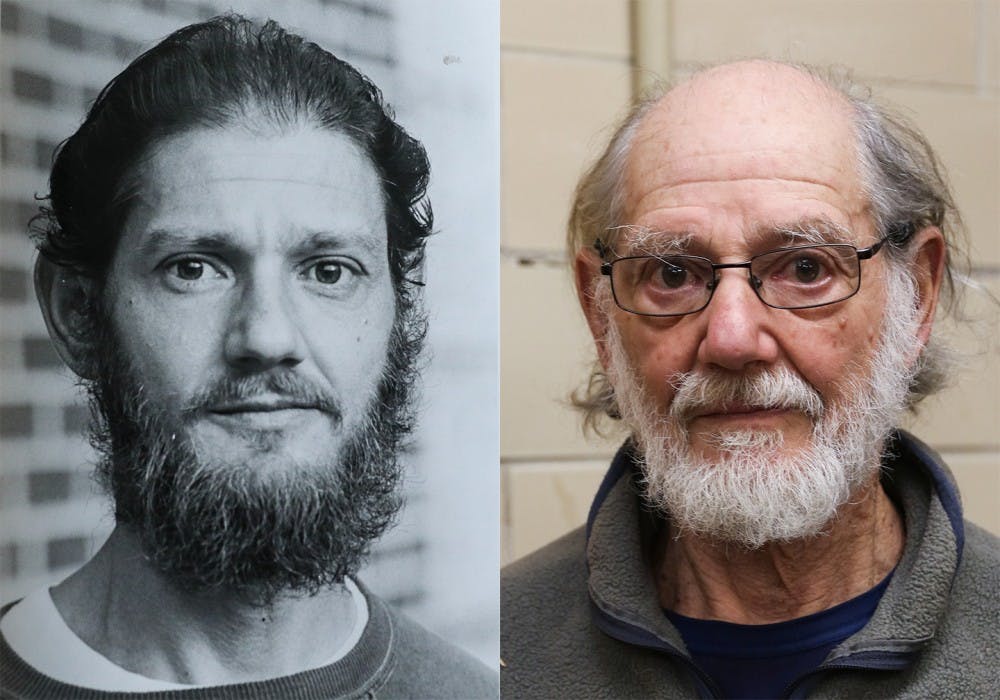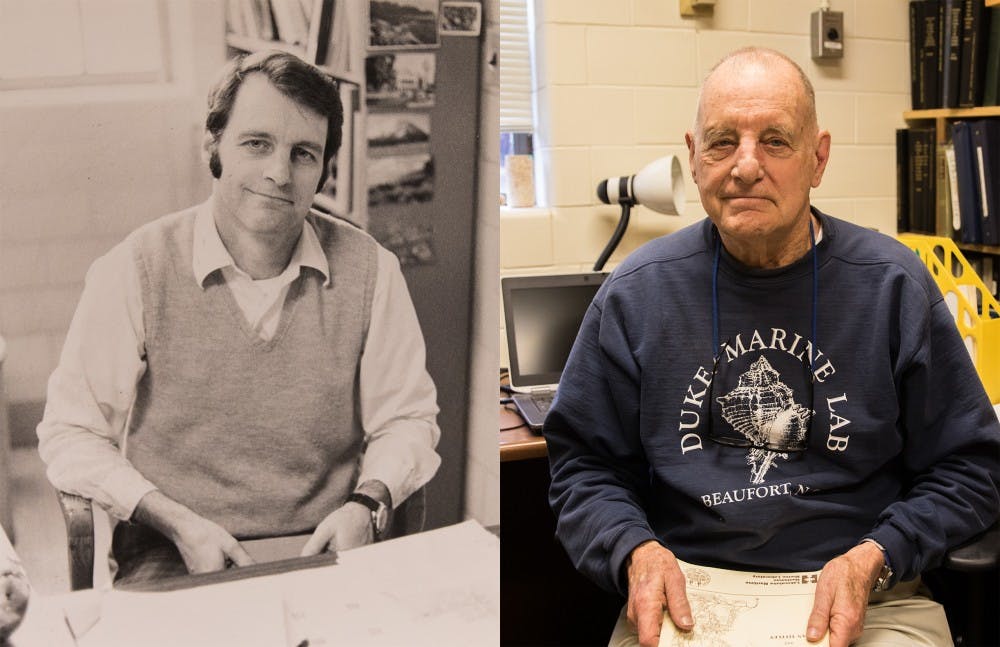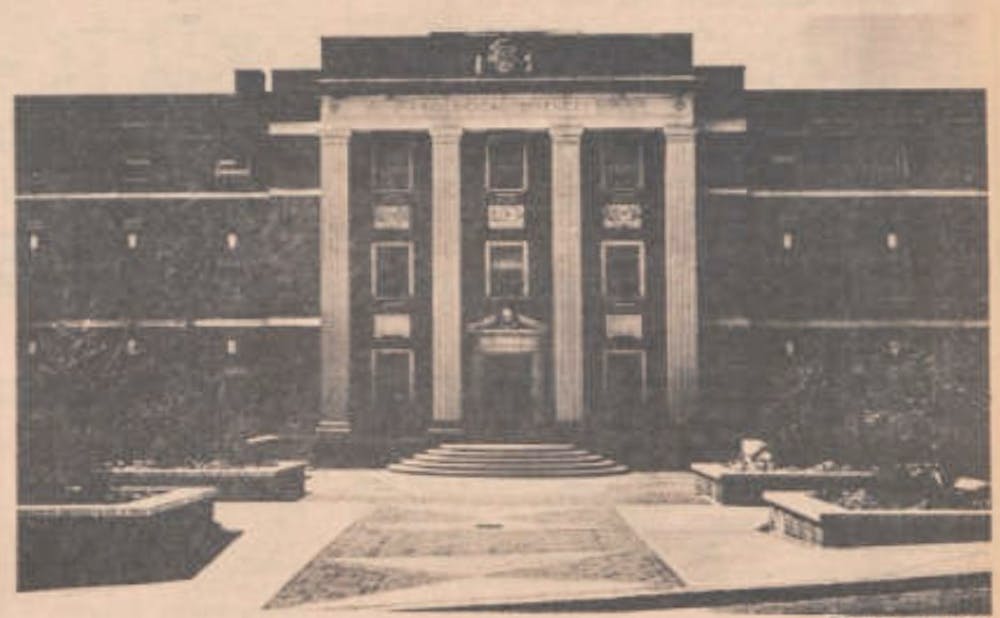The third installment in the Dear Old Duke series focuses on two of Duke's biologists and their stories, from having a case go before the U.S. Supreme Court to cataloging 17,000 seaweed specimens. The first installment covered the Meyers, an archaeologist couple, and the second was on four of Duke's deans. The interviews are edited for length and clarity.
Peter Klopfer
Peter Klopfer, professor emeritus of biology, came to Duke in the late 1950s, and he didn't plan to stay very long. Sixty years later, he continues to lead zoological research on lemurs.
Klopfer was initially tied down stateside after being arrested for protesting at a segregated restaurant in Chapel Hill, which eventually turned into a Supreme Court case over a defendant's right to to a speedy trial. His case was unanimously decided in March 1967.

Peter Klopfer: “I came to Duke in 1958 from Cambridge, England and I wasn’t expecting but to spend two or three years here, and then I was going back to Cambridge, England.”
The Chronicle: What kept you here?
PK: “Initially, being arrested in connection with the civil rights movement and being involved in lengthy court proceedings that ended up at the U.S. Supreme Court. But until it ended, of course I couldn’t leave. During that period of time too, my wife and I were involved in the founding of the Carolina Friends School. By the time my legal problems had been cleared by the Supreme Court, the school was underway and we were heavily involved in it—my wife, in fact, was acting as head. So we didn’t want to leave. Then my research program got to the point where I couldn’t move it anymore… There’s no way I could move these animals, so by the end of the 1960s I was pretty well stuck.
TC: What’s changed in your life since then?
PK: “Not much has changed. I’ve been doing pretty much what I’ve been doing since I started graduate school… For the last 10 years, my primary focus has been the study of the neurophysiology and ecology of hibernation in a small lemur, the only primate known to hibernate. I’m just looking at what hibernation in primates looks like—what controls it, is it different from hibernation in other animals or is there something special about primate hibernation, how do you induce it and can you induce it in humans?
“I don’t run as fast or as much. I used to coach women’s track before women’s track became a varsity sport. We used to be allowed to compete with the ACC, and we did so well one year that we messed up their scoring. So they wouldn’t let us compete in the ACC circuit anymore.”
Richard Searles
Richard Searles, professor emeritus of botany, came to Duke in 1965. He created a course for undergraduates on oceanography with Orrin Pilkey, James B. Duke professor emeritus of geology, and taught it for 40 years. He spent three years of his retirement making a database of Duke's 17,000-specimen seaweed collection, and now he's the curator for the University's algae herbarium.

Richard Searles: “When my hair was like that… I was doing research, I had a sabbatical—so 1972 probably. I was doing research, my graduate students and I, in southern Chile and Argentina, collecting seaweeds along the coast, scuba diving...
“I was teaching in the summers, most days, at the marine lab. I would take students out on short research cruises looking at phytoplankton in the water. North Carolina was not terribly interesting as a place to study seaweeds… There’s no real place for seaweeds to grow. They grow attached to the firm stuff, and we have miles and miles of unfirm coastline. But talking to the crew that was recruited from local fishermen, they told me about places offshore where there was a hard bottom. So I started going out there, looking to see what was there and eventually doing a lot of diving in the meadows of seaweed offshore. So it turned out to be the place where I did most of my research and where my students did most of their research, but I continued to be interested in seaweeds from other places… I eventually started doing work on Yucatan, and that’s what I was doing right before I retired.
"Retirement was sort of a stepwise thing, in some senses. I went to the dean in 2000—or probably 1999—and I said that at the end of the year I’m going to retire. So I did, but I said I still want to teach…
"I continued to do research and publishing up through 2007. Since then, the main scientific thing I’ve done—I’m theoretically the curator of the algae herbarium. We have a herbarium where we have lots of, mainly pressed, specimens of plants. There is a section of that that has a seaweed collection. Things were just getting heated up about databasing those collections, so I said I would database the seaweed collection. I worked for three years—not full-time, just when I felt like doing it—and there were 17,000 specimens, so I went through and put all the information like the species name, where it was from, who it was collected by and the collection conditions."
Get The Chronicle straight to your inbox
Signup for our weekly newsletter. Cancel at any time.
Bre is a senior political science major from South Carolina, and she is the current video editor, special projects editor and recruitment chair for The Chronicle. She is also an associate photography editor and an investigations editor. Previously, she was the editor-in-chief and local and national news department head.
Twitter: @brebradham
Email: breanna.bradham@duke.edu

